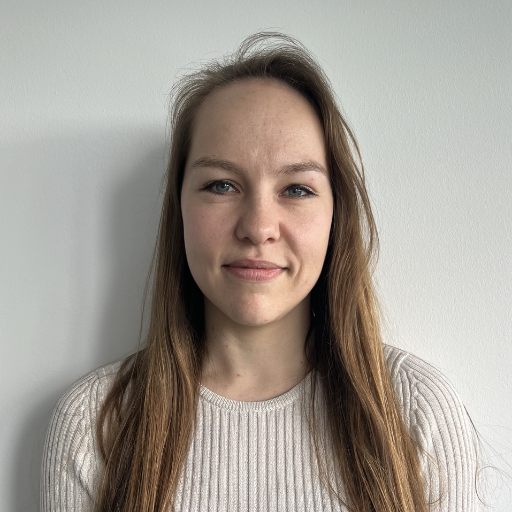Novel Locus Ceruleus-based Imaging Volumetry to Track Prodromal Alzheimer’s

Principal Investigator
Lea Grinberg, MD, PhD
University of California, San Francisco
San Francisco, CA, USA
About the Research Project
Program
Award Type
Standard
Award Amount
$300,000
Active Dates
July 01, 2017 - June 30, 2021
Grant ID
A2017560S
Goals
For screening and clinical management, and for clinical trials, it would be extremely useful to be able to monitor the pathological progression of Alzheimer’s disease (AD), especially during the decades preceding the onset of clinical symptoms when AD spreads silently in the brain. To date, postmortem examination remains the only tool to confirm and stage AD diagnosis. We found that a tiny brainstem nucleus, the locus ceruleus (LC), is especially vulnerable and earliest-damaged in AD. Furthermore, investigating postmortem tissue, we found evidence that in AD patients, the LC showed linear and progressive shrinkage. We will develop a histologically-validated clinical MRI [magnetic resonance imaging] template for detecting LC shrinkage. This should allow us to track AD progression on a case-by-case in individuals and permit intervention before a substantial amount of neurons have died. LC volumetry is potentially more scalable and economical than other potential AD biomarkers, and could be developed for longitudinal screening. Having such a method in place would in turn make it more feasible to identify and triage high-risk candidates for less accessible, more expensive, and more invasive studies, including PET [positron emission tomography] scans and spinal taps.
Summary
New ways of monitoring the progression of AD lesions remain elusive, and postmortem examination remains the only tool to confirm and stage AD diagnosis. Based on our findings in postmortem human brains, we are developing MRI-based biomarkers for noninvasively detecting AD-associated pathology progression in living patients. These new probes will identify brain structural damage years before clinical AD symptoms, at single patient level, using clinical 3 Tesla (3T) MRI scans, which is twice as strong as current high-strength MRI imaging and allows for exceptional clinical detail. [Tesla (T) is the unit of measurement quantifying the strength of a magnetic field, and until now, the high-field standard was 1.5T. Integrated results from 3T MRI imaging will culminate in the Prodromal Alzheimer’s Disease Detection System, which are automated systems for accurate brain image analysis that will lay the groundwork to deploy services to non-specialized centers.
The project has three tangible and clear deliverables:
- Histology-centric: Histology-based 7T MRI maps of LC nucleus. Methods: We will create histology-validated MRI algorithms using modern landmark- and contrast-based registration that simultaneously increases spatial resolution and angular resolution from 3D reconstruction from high-resolution brain architectonics, detected by postmortem whole-brain histological analysis, with voxel-wise correspondence to postmortem 7T (d)/MRI data.
- MRI-centric: Translate the 7T into clinical 3T MRI templates. Methods: The 7T maps will be harmonized with 3T scanners, which are more standard in U.S. hospitals, improving scalability and accessibility. We will generate templates by a step-wise strategy, using voxel-wise correspondence between postmortem in cranio 7T and 3T MRIs, and then to antemortem 3T MRIs of the same subjects.
- Precision-centric: Test specificity and sensibility of the biomarkers, their correlation with other AD markers, and their accuracy as a group and as a single readout. Methods: We will apply the frameworks developed in deliverable #2 to detect LC changes in large, de-identified, longitudinal imaging datasets focusing on brain aging/dementia for testing sensibility and population-based for testing specificity.
Our project innovates in many ways, including:
- Unique, highly specialized expertise of our collaborative team, which includes radiologists, anatomists and data scientists, complements my specialty in neuropathology;
- Use of supercomputers, the only kind of computer able to process high-resolution histology reconstruction (eg, 80 GB for whole-brain histology vs. 10 MB for brain MRI 3D reconstruction);
- Innovative proposed step-wise approach including postmortem brains and corresponding MRI will be used to create a histologically-validated algorithm for high-precision mapping of the LC in 3T MRI, guaranteeing the accuracy of the results and direct translation to clinical practice; and
- Use of deep learning computing methods to power the accuracy of our algorithms and minimize false negatives.
Our algorithm/biomarker will enable longitudinal, sensitive, clinical MRI measurements to track individuals’ neuropathological progression. This could ultimately allow detection of AD at much earlier stages and permit intervention before neurons in affected brain regions have become irretrievably damaged. Our proposed biomarker is anticipated to be highly sensitive and will provide a scalable, highly cost-effective, and widely accessible screening tool because MRI equipment is widely available and its cost continues to drop. Results will guide clinical decisions, and narrow down the subject population requiring more expensive PET scans and invasive spinal tap. Also, early diagnosis provided by our biomarker will translate into early intervention and lower care-associated costs.
Related Grants
Alzheimer's Disease Research
Identifying New Memory and Brain Markers for Early Alzheimer's Disease
Active Dates
July 01, 2024 - June 30, 2026

Principal Investigator
Helena Gellersen, PhD
Current Organization
German Center for Neurodegenerative Diseases
Identifying New Memory and Brain Markers for Early Alzheimer's Disease
Active Dates
July 01, 2024 - June 30, 2026

Principal Investigator
Helena Gellersen, PhD
Current Organization
German Center for Neurodegenerative Diseases
Alzheimer's Disease Research
Staging Alzheimer's Disease Using Blood Samples
Active Dates
July 01, 2024 - June 30, 2026

Principal Investigator
Gemma Salvadó, PhD
Current Organization
Lund University
Staging Alzheimer's Disease Using Blood Samples
Active Dates
July 01, 2024 - June 30, 2026

Principal Investigator
Gemma Salvadó, PhD
Current Organization
Lund University
Alzheimer's Disease Research
Shining a Light on How Early Tau-Related Brain Changes Affect Memory Loss
Active Dates
July 01, 2024 - June 30, 2026

Principal Investigator
Martin Dahl, PhD
Current Organization
Max Planck Institute for Human Development (Germany)
Shining a Light on How Early Tau-Related Brain Changes Affect Memory Loss
Active Dates
July 01, 2024 - June 30, 2026

Principal Investigator
Martin Dahl, PhD
Current Organization
Max Planck Institute for Human Development (Germany)


